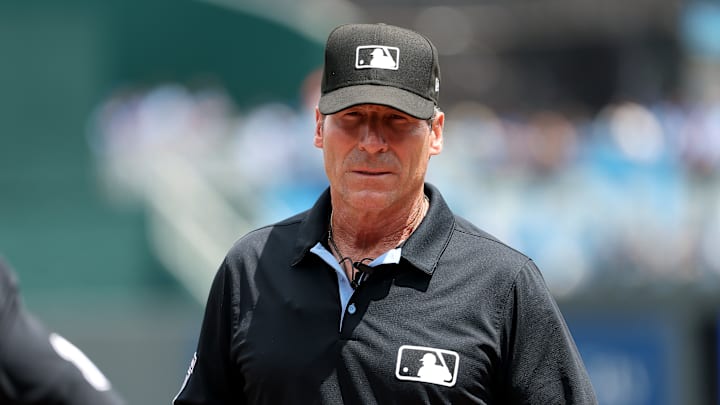The human element to MLB umpiring will always be complicated and stir up controversy -- just ask recently retired official Angel Hernandez.
As society becomes more technologically advanced, many have called for robots to stand behind home plate and ensure the right calls get made. Over the years, the league has gained traction in that department. But recent reporting suggests we are far from seeing an automated ball-strike system (ABS) in the majors.
Bad news: Robot umpires are just as bad as Angel Hernandez
J.J. Cooper of Baseball America recently wrote a story explaining why a roboump hasn't worked as the league hoped. He used data collected by the league while experimenting with ABS to prove his point, placing emphasis on when it got introduced to Triple-A in 2022.
"The strikeout rate surged the first year Triple-A implemented the ABS," Cooper said. "The 19-inch strike zone set up for the ABS led to a larger number of strikeouts in ABS games compared to human umps."
In response, the league adjusted accordingly in 2023 by reducing the width of the strike zone to 17 inches. Moreover, Cooper cites a collaborative attempt with Hawkeye, an optic-tracking system -- used in other sports like tennis and soccer.
The purpose of Hawkeye was "to set the top and bottom of the strike zone based on a player’s stance." Conversely, it differs from the "formulaic version of using a percentage of the player’s height to set the top and bottom of the zone. Alas, it was all for not, with the MLB reverting to the latter in 2023. However, they added a bit of a twist to it.
Cooper points out how the league "deliberately increased the top of the zone by 2.5%" in comparison to 2023. The goal of this is "to increase the number of strikes and reduce the number of walks." While it did help to some degree, the columnist believes "a clear difference between the human and automatic zone" remains.
The sentiment from Cooper aligns with recent intel from ESPN's Jesse Rogers, revealing that the MLB will deploy an ABS challenge system instead of a roboump.
Per Rogers, the Triple-A will test the concept starting on June 25. Rather than letting ABS make "every call" for the umpire, this approach is a bit different. Hitters or catchers can challenge balls/strike calls "in real time with the umpire receiving an answer to the challenge via an earpiece."
Rogers polled fans and players to see which of the two methods was preferred, and the challenge system won by a landslide. Nonetheless, this is all to say that ABS is nowhere near ready to be executed in the majors.
